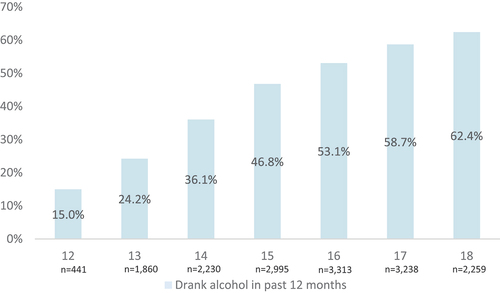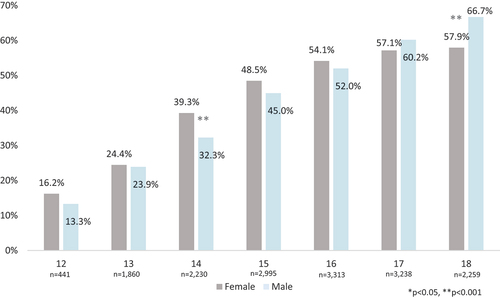Figures & data
Figure 1. Past year alcohol use increases incrementally during adolescents (12 to 18 years).a.

Figure 2. Past year alcohol use by sex, showing similar trajectories by age between male and female adolescents.a.

Table 1. Multilevel data structure of Add Health: adolescents situated within peer groups, schools, and neighborhoods.
Table 2. Adolescent characteristics.
Table 3. Adolescent alcohol use. Random effects results from null two-level hierarchical multilevel models (MLM) (Models 1–3); Null two-way (Models 4–6) and three-way (Model 7) cross-classified multilevel models (CCMM).
Table 4. Adolescent alcohol use. Random effects results from final, fully adjusted three-way cross-classified multilevel model (CCMM), with the full sample (Model 8) a, and sex-disaggregated models (males: Model 9; females; Model 10).b.
